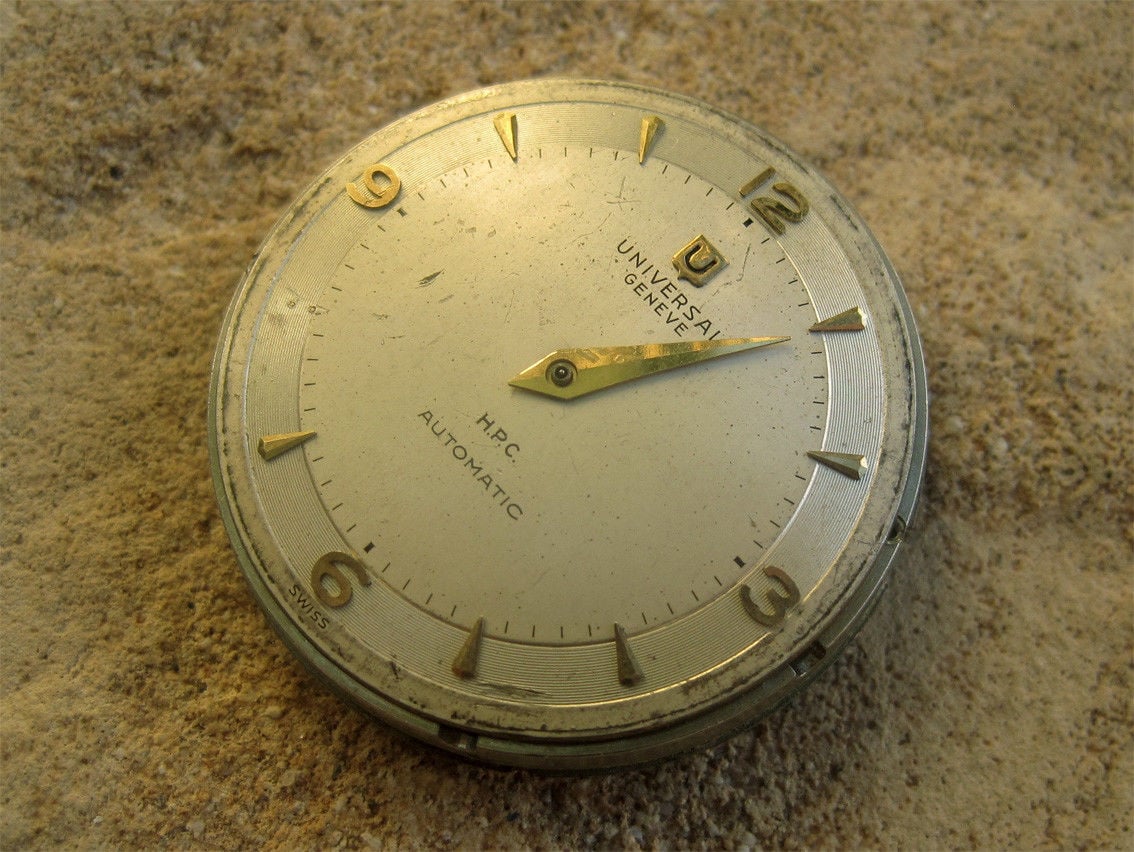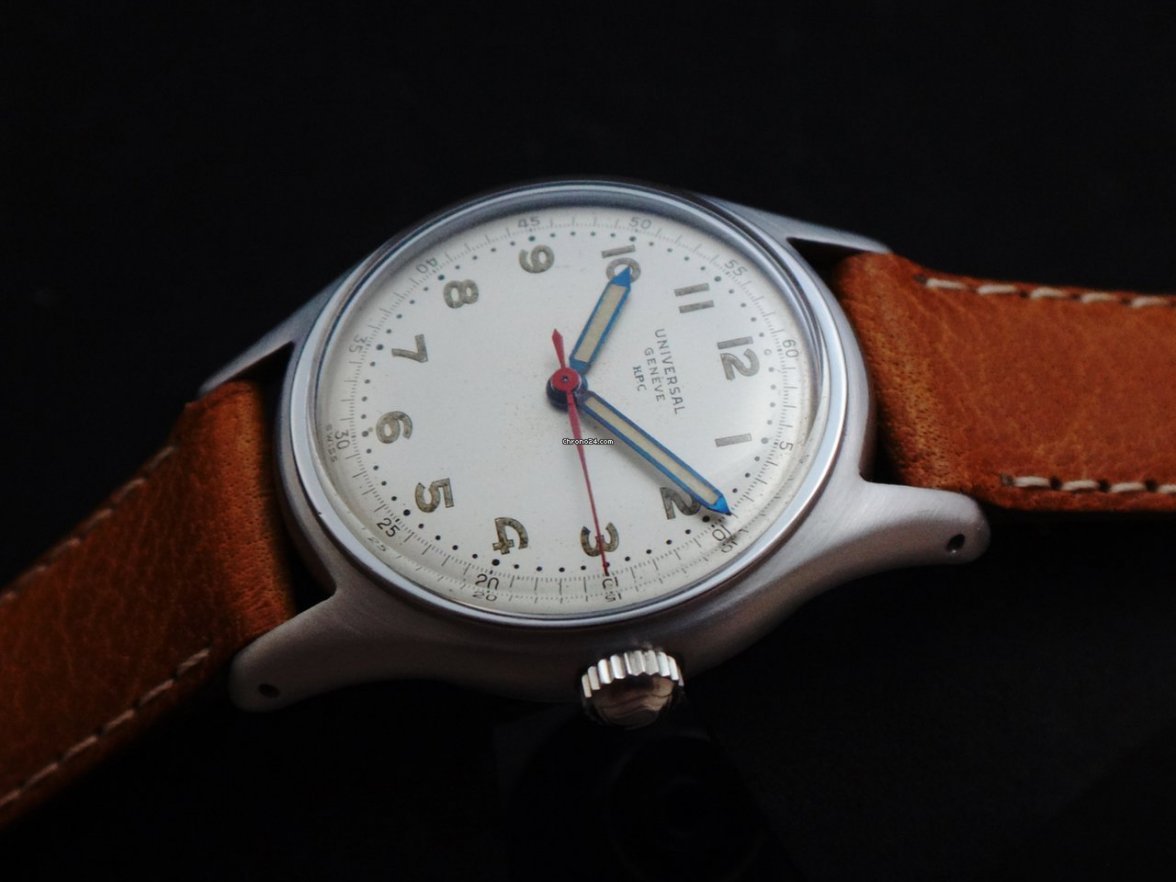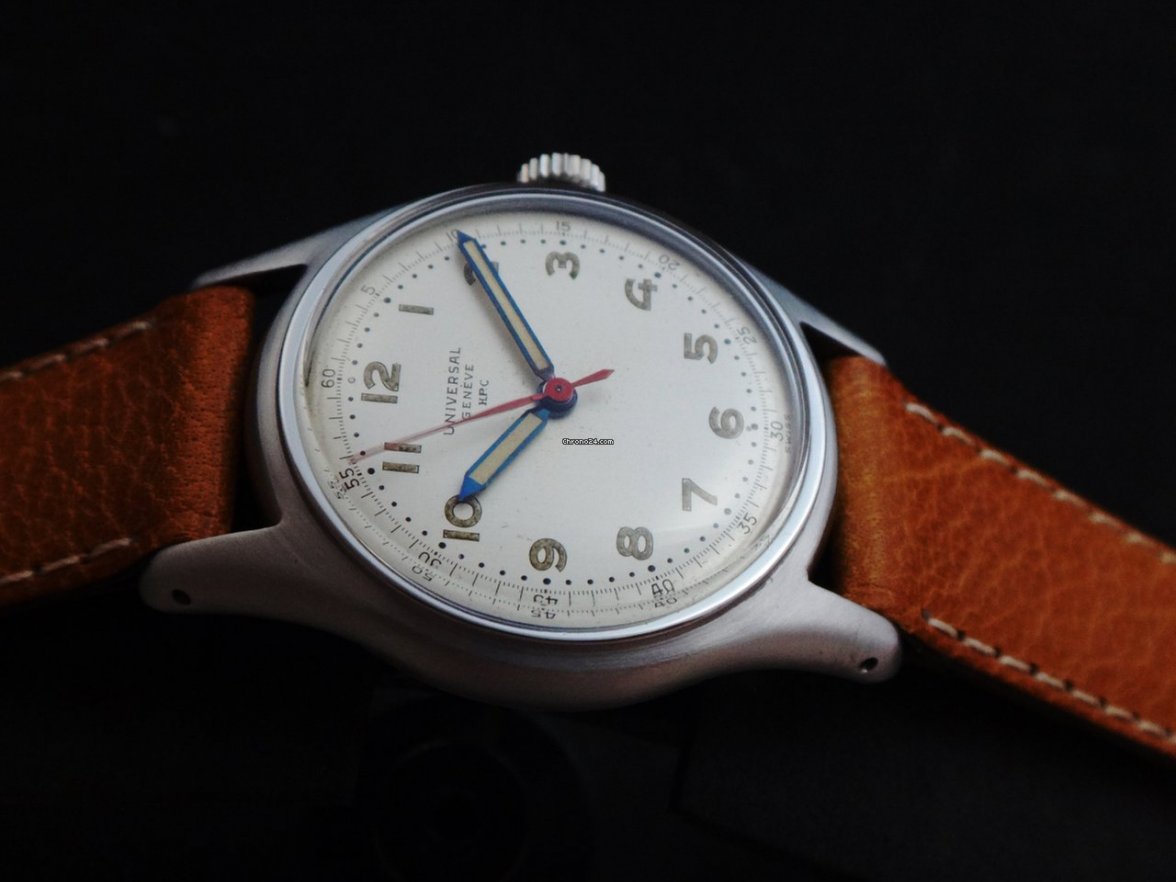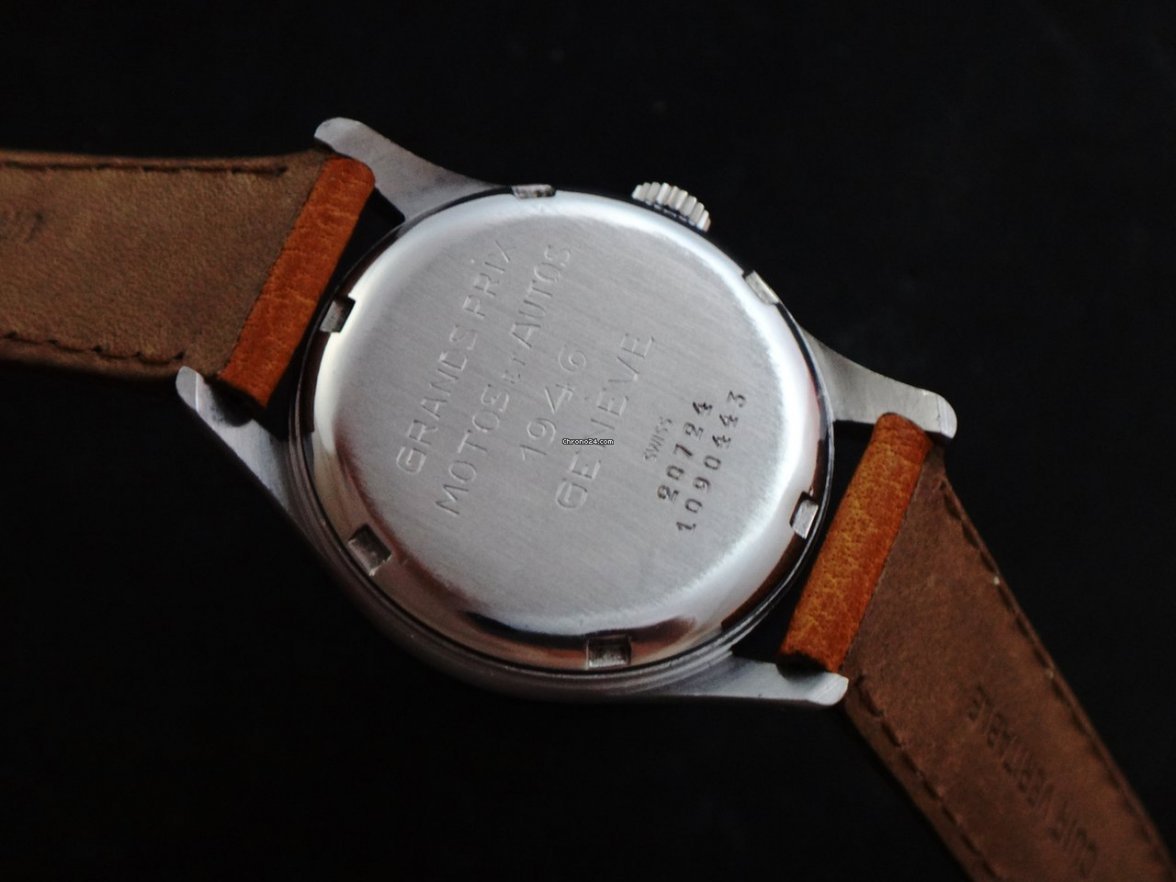We have definitely not got to the bottom of this but here's what I think we do know:
- There is at least one UG advert showing a watch with 'HPC' on the dial (Sala P224) and therefore it's quite likely that watches left the factory with HPC dials
- Sala (P220) explains that it stands for High Precision Chronometer. I'm not aware of any additional proof that this is correct.
- We see HPC on chronographs and time-only watches.
- We only see 'Chronometre' on time-only watches. These all have serialised movements. There is a good thread here about verifying chronometres
https://omegaforums.net/threads/universal-geneve-chronometre-how-to-verify.81943/
- What is clear is that HPC and 'Chronometre' dial designations did not mean the same thing. It was not simply that one came before the other; they co-existed.
- I am not aware of a single watch with an HPC dial that has the features that I would expect to see on a chronometre movement e.g. I've not seen an HPC watch with a bumper movement without 'unadjusted' on the bridge.
- Perhaps watches with HPC dials were sold in countries with less stringent regulations regarding chronometers? Or perhaps it was purely a marketing strategy and actually meant very little at all? What is puzzling however is how few HPC dials we see. If it meant very little and watches didn't have to pass stringent tests in order to have the HPC designation, then why not put it on more watches?
Here's an HPC Polerouter that I picked up recently. The Cal 138ss movement is completely standard without serial number etc.













